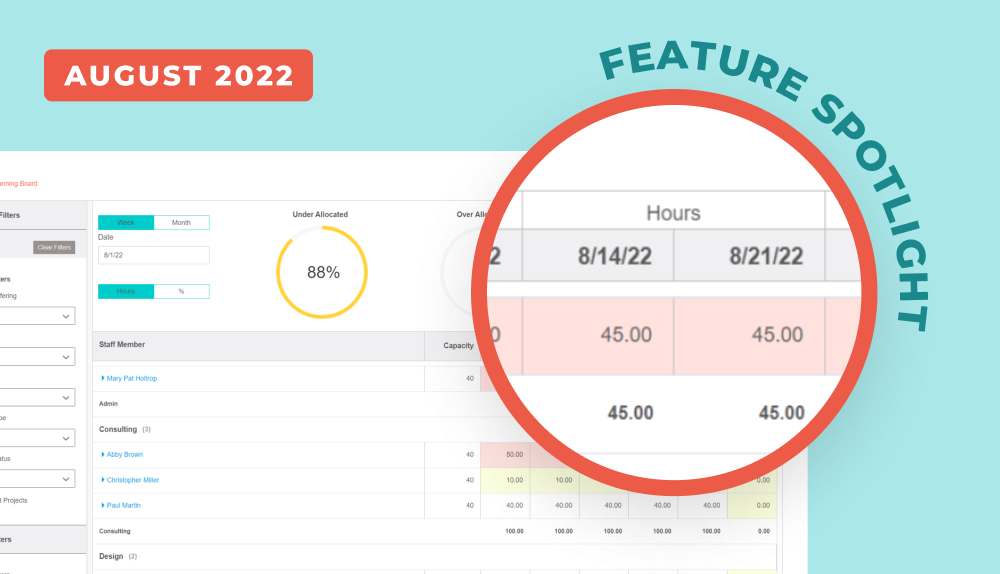In this article, we’ll be covering 6 common project budgeting mistakes you could be making and how to prevent them from ruining your profits.
Overcomplicated Payments = Additional Costs
Many companies, especially small ones, change the price of the working hours throughout the project; the more hours, the lower their price. Others tend to combine time and material with fixed-price projects in settlements for a single project. However, such an approach to project budgeting is very unprofitable — and you may not even know about it.
Simple Structures Create Better Finances
While lowering the price as the project goes on may be tempting for a customer, for a provider, it may quickly turn into a disaster. Changing the price:
- Makes it very difficult to forecast the costs of a project.
- Is a root cause of all types of errors in final invoices and may be a reason for a loss of trust in the company-customer relationship.
- Makes every working hour less profitable.
- Generates thousands of dollars in additional costs just to calculate the values.
- Makes your processes unscalable; with them, your company simply cannot grow.
In other words: overcomplicated payments may attract customers, but they also may ruin your company’s budget.
How to Keep Your Finances Simple
Many organizations simplify their financial structure as they grow — and they grow even faster with very basic processes.
The largest companies will only have three types of projects:
- Fixed price
- Time and material
- Retainers
As a result, they have perfected their financial monitoring and become capable of keeping track of every single penny without wasting thousands of dollars on pointless calculations.
Selling Fixed-Price Projects = Dropping Profitability
But what if some types of financials in projects are more risky than others?
That is the truth for fixed-price projects. While they are definitely a bargain for customers, for professional services companies, it may be difficult to make them profitable — especially from a long-term perspective.
Why Fixed-Price Projects Can Turn Out to be Unprofitable
There are a few reasons for that:
- Their profit margin changes with inflation over the years.
- They often generate additional costs that are included in the project scope but not in the budget.
- They have to be completed regardless of the costs, unless the contract states otherwise.
In short, they are not flexible enough to keep up with changes in the environment.
Which fixed-price projects are the most profitable?
Not all fixed-price projects are to be criticized — some of them can turn out to be very successful, too.
So-called quick fixes, or small, product-based projects, are some of the most profitable. Since they are generally short-term endeavors, their scope of work can be accurately assessed and priced, allowing the companies to generate huge profits.
Some long-term fixed-price projects can be profitable, too, provided that your company has experience completing them. You can accurately estimate and predict so-called gray-haired projects (projects that your business has delivered successfully numerous times), making them a reliable source of profit.
Failing to Include Time Off in Project Plans = Inevitable Delays
In some cases, comparing planned and actual project margins can be a harsh experience. But why?
In our experience, unrealistic plans are usually to blame. Numerous companies plan their people for 160 hours a month, regardless of their actual availability, which time off, sick leave, and other responsibilities can affect significantly. As a result, the costs of work and additional allocations grow, and so do the delays, taking a toll on project budgets.
Importantly, we are not talking about small financial differences, too; in some cases, companies experienced a 25% drop in their margins, effectively losing a quarter of their profits.
How can I make my plans and margins more realistic?
To assign the right people to the project, you need to calculate the actual capacity (the maximum available number of hours an employee can spend working in a given period) of a specialist you want to assign and compare it to their utilization or the time they will spend on other responsibilities. The difference between the two values will give you information on the number of hours an employee can spend on your project.
Overly Optimistic Allocations = Delays and Additional Costs
In our experience, many companies decide to use approximate data on the number of hours necessary to complete an assignment, as well as their cost. However, this approach rarely pays off.
Let’s imagine a manager who wants to assign a specialist to a very simple project. However, he did not look at the calendar or the budget, and, based on his experience, he assumed that the average hourly rate for such a specialist is $30. He also used his past projects to estimate that this operation would take 100 hours.
Based on the data, the project would cost $3,000. Happy with the result, they asked the customer to pay $5,000 for the operation, leaving them with a 66% margin.
However, when the manager was about to schedule the project officially, he noticed that the developers with hourly rates below $30 were simply not available. As a result, he had to settle for a more expensive employee, costing $40 per hour.
To make things worse, the developer has discovered that he won’t be able to complete the project in just 100 hours — he needs at least 120 hours. Therefore, the project’s costs have suddenly increased to $4,800, leaving the overly optimistic manager with just $200 in profit.
How to Avoid Mistakes When Allocating People and Costs
There’s only one way to avoid the problems that the manager from the story above had in his work: working based on real data instead of assumptions and wishful thinking.
When planning a project — or even acquiring one in the first place — check the availability of your people and use that information to allocate them. Do the same for their salaries or wages to complete budgeting. Only then will you avoid ruining your profit margins.

Incorrect Time Tracking = Miscellaneous Expenses
A few years ago, there was a company that wanted to track time and use the information to calculate the costs of work. However, they decided their employees would only track 7 hours a day, instead of 8, as they waste some of their time on breaks and organizational tasks anyway.
However, when the time came to sum up the company’s finances, it turned out that around half a million dollars were spent on unknown activities, as the untracked hours were still generating costs.
How to Correctly Track Time and Combine it With Finances
There are a few steps you need to take to track time accurately.
First, assign an hourly wage to all of the employees. If they have a monthly salary, calculate their hourly rate based on the hours they spend working.
Then, introduce the time tracking process to your company. Remember to educate employees on its importance — show them that their time will have a direct impact on the invoices.
Don’t be afraid to enforce time tracking among your employees. If necessary, tie the tracked hours to their wages, or try some other ideas that have been successful for our customers’ businesses and may help yours, too.
No Historical Data = No Profits
Imagine that you have a retainer project that is supposed to take 10 hours a month, and, regardless of the effort, the customer will pay the same price. However, when you look at the time tracking in the project in the past few months, you discover that it only took 6 hours to complete. In other words, your employee could have done 4 hours more of billable work, and you simply didn’t know about it. What if that happens in dozens of different projects?
Assuming the ratio of actual worked hours to planned hours stays the same, the company will lose 40% of its employees’ time, and it will miss out on the opportunity to acquire more projects that could generate profits.
How to Use Spare Hours to Generate Profits
First, you must know how many hours you can use to generate additional profits.
To do that, your team needs to track time daily and pay attention to how much time they spend on each allocated task. Then, you can look for spare hours in their timesheets to determine which projects take less time than previously estimated.
Then, you can use the data to:
- Create more accurate plans for the projects you already manage and optimize their costs by assigning fewer hours to them.
- Assess the number of hours your employees could spend working on other projects.
- Acquire or expand projects requiring their skills and use specialists’ time to generate profits from such projects instead of spending them on idle allocations.





